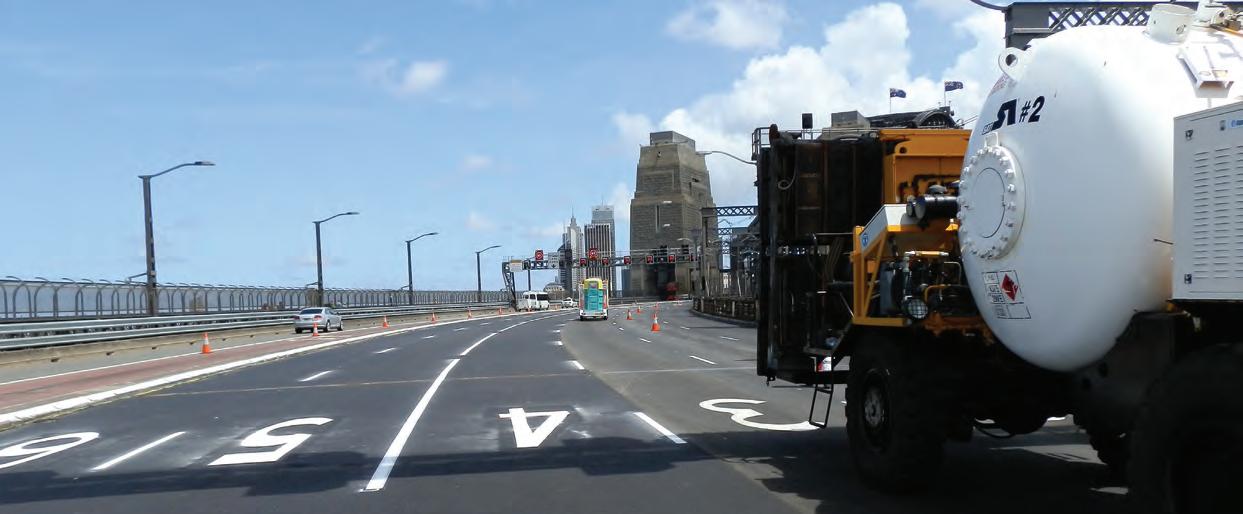
6 minute read
Motorcycle barriers
To help mitigate the risks for motorcyclists impacting roadside hazards, a range of motorcyclist protection devices are available to road designers.
SAFETY ON TWO WHEELS
INGAL CIVIL HAS CREATED TWO DIFFERENT ROAD SAFETY SOLUTIONS TO LOWER THE POTENTIAL SEVERITY OF IMPACT WHEN MOTORCYCLISTS COLLIDE WITH ROAD SAFETY DEVICES.
The centre for Accident Research & Road Safety, Queensland found that motorcycles account for 5.7 per cent of all Australian passenger vehicle registrations.
It also found motorcycles account for only 1.2 per cent of passenger vehicle kilometres travelled.
However, in 2016 motorcycle riders and pillions accounted for around 19 per cent of all road crash deaths and an even higher proportion of serious injuries.
To help mitigate the risks for motorcyclists impacting roadside hazards, a range of motorcyclist protection devices are available to road designers.
These devices are intended to help reduce the risk to riders who collide with road safety barrier systems or their components such as posts or pass under a barrier beam.
While there is a high percentage of motorcycle-related fatalities and injuries in Australia, the AS/NZ standard 3845 nominates three European test protocols which can be used for the evaluation of motorcyclist protection devices.
The three protocols nominated include a European CEN Technical Specification CEN/TS 1317-8, the French LIER protocol and the Spanish Standard UNE 135900.
These protocols are all specific to the performance of safety devices for motorcyclists.
The Federation of European Motorcyclists Association shows all three are evaluated with a crash test dummy sliding along the ground headfirst into the safety device at differing speeds and angles.
Each test protocol also has different impact points and numbers of impacts required to determine the results.
For the European CEN Technical Specification and Spanish Standard, the performance and acceptance criteria is defined by severity level.
Test results can be classified in to two severity levels, depending on the value of results received from the dummy.
According to the Federation of European Motorcyclists Association, the Head Injury Criterion is an index adopted to evaluate the impact severity level.
The Head Injury Criterion measures the likelihood of head injury arising from an impact. Severity level one is the lowest level of injury: for example, a person may retain consciousness and may only have a headache. Severity level two has an increased severity of impact and potential injuries such as facial and nose fractures.
Ingal Civil has a specialised motorcyclist protection system to help lower these risks. The system is installed onto existing roadside barriers to reduce the chances of serious injury to motorcyclists and pillion passengers in run-off-road accidents.
The Ingal MPR is approved by VicRoads
as an acceptable motorcycle safety product with a UNE 135900 Impact Severity Level One, meaning it has achieved the lowest impact severity level.
Luke Gallagher, Ingal Product Manager, says the Ingal MPR is an additional system that can be installed on the traditional guardrail system on roads with high motorcyclist traffic volume.
“Winding roads through the hills are where most motorcyclist crashes typically happen so this solution can increase safety in those situations,” Mr. Gallagher says.
“The Ingal MPR was tested to the Spanish criteria with two tests. The first involved aiming the head of the dummy at the post with it lying on the ground on its back. The dummy impacted the barrier at 60 kilometres per hour and on a 30-degree angle.”
The second test involved aiming the dummy between two guardrail posts.
“That is just to evaluate any chance for pocketing, or for any limbs of the person to go under or over the barrier and get caught. For that test, we also got a level one impact severity.
“Offering a level one system was very important to us due to reduced possible injuries,” Mr. Gallagher says.
He says Ingal MPR is used across nearly every state and territory in Australia in key motorcycle areas identified by the road authority.
Mr. Gallagher says the company is in
constant contact with representatives from the motorcyclist community to develop and implement their safety solutions.
Ingal has also created a plastic vulnerable road user protection cover for the terminals on barrier systems.
“It helps to protect motorcyclists from possible catch points on some systems, but it won’t mitigate the capability of the barrier to contain or redirect the vehicle it was designed to save,” Mr. Gallagher says.
The vulnerable road user protection cover can be retrofitted onto some existing safety systems either during use or with a new installation.
Brian Wood, Secretary of the Motorcycle Council NSW, says riders are concerned about all barriers but tend to crash on winding roads.
“We are over-represented in the percentage of crashes, and a lot of those do occur on winding roads because that is where motorcyclists enjoy riding. Riders look for the maximum protection that can be provided,” Mr. Wood says.
He says riders have concerns around the tops of posts on some safety barriers, so the council has been lobbying for systems that have the top of the post below the beam, which has been incorporated into the Ingal Ezy-Guard system.
“Research shows if you collide with a barrier, there is a 50 per cent chance you are still on the bike and in that situation, the tops of the posts will cause injury. In the other 50 per cent, you have come off the bike and are sliding along the road, and that is where the under-run rails provide you with protection against injury,” Mr. Wood says.
“The council continually lobbies that we need protection for all barrier systems to accommodate motorcycles and to retrofit systems like the Ingal one to make barriers more motorcycle friendly.”
Mr. Gallagher says designers have a choice when considering what barrier to use for their project and it is incumbent on them to strive for the best road safety outcome with the lowest severity products.
Specialists in stability management
Dual Axis Inclinometer – Elite HMDS8000 We offer a range of digital inclinometers that provide operators of machinery with highly visible pitch and roll measurements. Our Elite model features configurable warning and alarm levels for pitch, roll and speed. It’s also capable of data logging these events to its internal memory.

GPS Trip Meter – Elite HMGT8000 Our GPS trip meters are a popular choice for councils and road authorities. Easy to install and operate, they are used for marking road locations for repair, measuring sign and cone positioning for lane closures and traffic control as well as road length measurements.
Hummingbird Electronics are specialists in electronic vehicle and machinery safety solutions. We offer a suite of safety focused products designed to protect operators and equipment in the mining, civil, industrial, machinery hire and agriculture industries. Designed and manufactured in Australia to the highest standards, Hummingbird is a brand you can trust to improve safety on your worksite.










